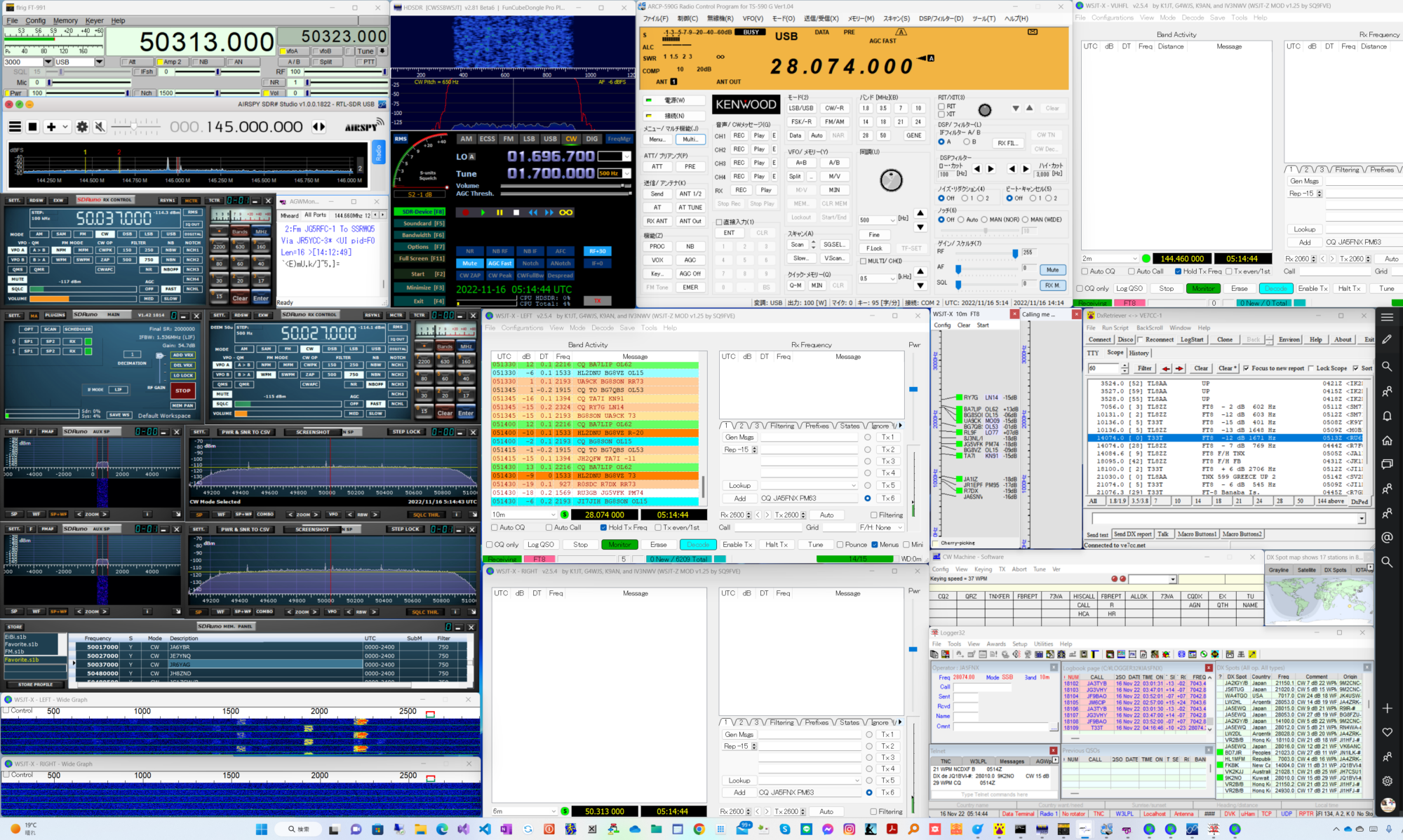Forwarded by Bunshiro Tamura
———————– Original Message ———————–
From: Joe Taylor
To: WSJT software development
Date: Mon, 7 May 2018 15:39:35 -0400
Subject: [wsjt-devel] Third Public Test of FT8 DXpedition Mode: Early results
—-
Hi all,
Hearty thanks to everyone who participated in the Third Public Test of FT8 DXpedition Mode!
A number participants and would-be participants reported that propagation was spotty, at best. Nevertheless, at AA7A, G4WJS, K1JT, and K9AN we copied 405 unique callsigns of stations acting as “Hounds”, and at least one “Fox” was worked by 305 of them. Many Hounds worked two or three of the Foxes.
Details of stations worked and calls copied are given in the attached file “logged_calls.txt”. We’re sorry if we missed you, or if propagation was unfavorable for you.
Hounds who followed advice to monitor the “Ping Jockey Relief” chat page understood before start time (1400 UTC) that we had changed operating frequency from 14.090 to 14.115 to avoid most of the 20m activity in the ARI RTTY contest. Soon after 1400 UTC they also learned that W1/KH7Z had some unexpected setup problems and was unable to continue. Consequently W7/KH7Z took over as Fox at 1425 UTC and continued operating until 1600. K1JT was Fox between 1600 and 1700, and G4WJS stepped in for a short bonus run between 1710 and 1750 UTC.
The three Foxes were configured as shown in the following table. The setup at W7/KH7Z is comparable to what will be used at KH1/KH7Z, the Baker Island DXpedition. We operated in ways expected to provide the most thorough tests of the DXpedition Mode software. The low-power, simple-antenna setup at K1JT may be indicative of what can be done from KH1/KH7Z when band conditions are poor.
Call Grid PEP PerSlot Antenna
—————————————
W7/KH7Z DM43 500 W 20 W 3 el
K1JT FN20 100 W 4-9 W Dipole
G4WJS IO91 400 W 16 W 4 el
The attached plot “QSO_rate.pdf” shows the equivalent hourly QSO rate for each 5-minute interval at W7/KH7Z. The measured rates range from 8 to 33 per 5-minute interval, or 96 to 396 QSOs per hour. Several factors acted to suppress the rate at various times. The dip at t=30 minutes was caused by a restart following a program crash. We have identified the reason, and this bug will be easily fixed. After an hour W7/KH7Z started to run out of available Hounds; by the 90-minute mark he had worked 83% of those copied at least once.
This test run has shown that peak QSO rates with FT8 DXpedition Mode can approach 400/hour, and that sustained rates well above 200/hour will be readily achieved in good conditions.
The test also helped us to identify a few relatively minor software bugs that still need to be fixed. One such bug prevented Hounds calling with compound callsigns (e.g., S5/N1YU, VE3GFW/W6, W1/V47KA, W7/VK2IXC, W7/ZL1NA, W9/K9AN) from working the Fox, through no fault of their own. Unknowingly, the Foxes wasted significant time trying to work these stations, thereby suppressing their QSO rates.
All in all, we consider this test run very successful. We hope to be able to release the General Availability WSJT-X Version 1.9.0 before the end of May.
— 73, Joe, K1JT
——————— Original Message Ends ——————–
